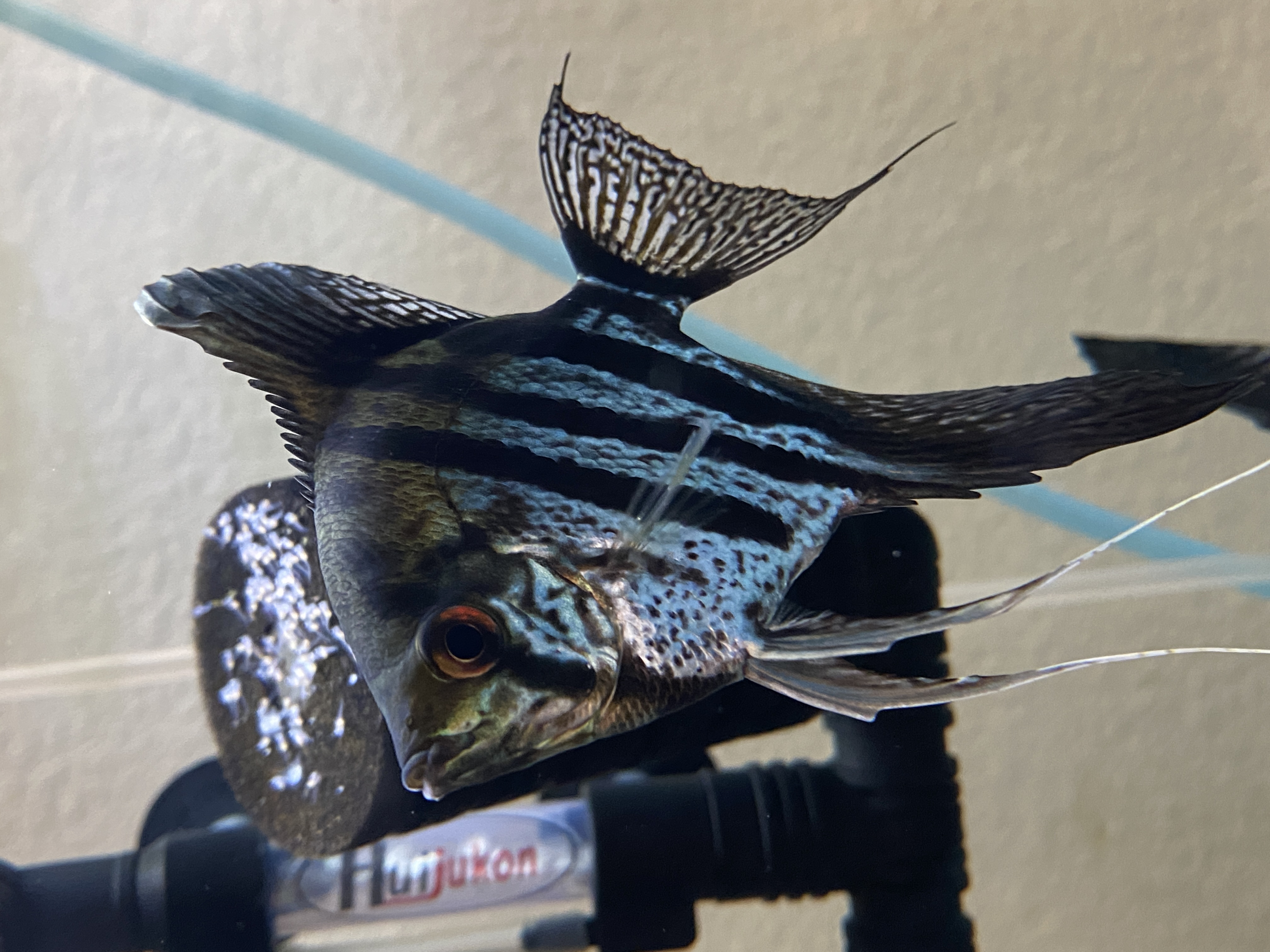Project Results
About This Project
Angelfish are a popular fish kept in the aquarium hobby. However, to this date, no one has ever sequenced the genome of the freshwater angelfish. Taking advantage of Nanopore technology, I aim to sequence the genome of this wonderful aquarium pet and potential model organism. I have already assembled 65% of the fish's genome and need to raise funds to sequence the rest. This complete genome assembly will reveal novel information about angelfish phylogeny and its genetic architecture.
Ask the Scientists
Join The DiscussionWhat is the context of this research?
The genome of the angelfish has never been sequenced before. Due to the high costs, equipment, and resources required, sequencing the entire genome of an animal can be challenging. However, with the advent of Oxford Nanopore Technology which allows for long sequencing reads at a limited cost, whole-genome sequencing has become more affordable and accessible.
Angelfish are popular pets kept by aquarium hobbyists, including me. Thus, when I learned of nanopore technology, I decided to take advantage of it to sequence the angelfish genome.
This work will answer two questions: 1. What genes and pathways are present in the angelfish? 2. How could the angelfish be a model organism for aquatic biology research based off its genetic differences from other fish models?
What is the significance of this project?
The results of this project will elucidate the genetic makeup of the angelfish so that it can potentially contribute to future aquatic research. For example, angelfish are a type of cichlid, and cichlids have been used as model organisms to study skull and craniofacial structures. Sequencing the genome of the angelfish will further contribute to research as it may potentially be another model organism. This would of course only be possible if the whole genome of the fish is sequenced and it's intricate genomic pathways revealed. Furthermore, although African cichlids are a well known model organism, less information is available about South American cichlids like the angelfish. Sequencing it's genome would diversify the model organisms available.
What are the goals of the project?
The immediate result of this research is to be the first project to ever fully sequence the genome of the freshwater angelfish. With the resources at hand, I have already begun this work and assembled 65% of the angelfish genome with the Nanopore Mk1B device. I have deposited this partial genome to the NCBI GenBank so that the partial genome is accessible to researchers worldwide. With the funds raised, I will purchase an additional Nanopore flow cell so that I will be able to improve the assembly and have the rest of the genome fully sequenced. This new complete assembly will also be deposited to NCBI.
Budget
To perform the sequencing, I purchased a Nanopore MinION Mk1B device due to its affordable start-up costs and long read ability, which allows easier de novo assembly of genomes. This device comes with a single flow cell which I have used for the initial sequencing work. I believe that I need to purchase an additional nanopore flow cell to build an accurate and thorough representation of the angelfish genome.
Endorsed by
 Project Timeline
Project Timeline
I have all the reagents necessary to run the sequencing experiment. When I have the new flow cell, I will prepare a new DNA library for the angelfish and load the library into the Nanopore flow cell. With the new sequencing data, I will be able to assemble the reads with the flye de novo assembler. Once I have validated successful assembly by calculating a BUSCO score, the sequence will be deposited to NCBI, and I will publish an open-access paper on my results and methods.
Sep 21, 2022
Project Launched
Oct 10, 2022
Purchase the flow cell
Oct 14, 2022
Prepare the sequencing library for the next run
Oct 15, 2022
Sequence the genome of the Angelfish
Oct 20, 2022
Assemble the genome with flye and calculate BUSCO
Meet the Team
Affiliates
Team Bio
My research work is conducted at BioCurious, a non-profit community hackerspace.
I have years of independent molecular biology and aquatic biology research experience. Some projects I have done in the past involved studying the relationship between protein concentration in fish feed and water pollution, gene editing marine diatoms, and repurposing the Cas9 enzyme as an intracellular mammalian defense mechanism.
Indeever Madireddy
I am an avid fish keeper and independent researcher heavily involved in aquatic biology, biomedical engineering, computer science, and CRISPR gene editing. Check out my orcid profile for a list of my publications and research work: https://orcid.org/0000-0002-84
Additional Information
Here is a link to my initial sequencing run. You can see a summary of my data.
Angelfish are incredibly unique fish. Prior research has shown them to be incredibly intelligent, being able to count and distinguish pieces of food. Angelfish were also able to distinguish between food sizes, preferring a few pieces of large food over many pieces of small food.
Angelfish can also eat hundreds of mosquito larvae in a single day, helping reduce the spread of malaria in South American countries and reducing the spread of vector-borne diseases.
Angelfish come in a variety of colors, from red to yellow to black, and even multiple patterns and shades. Sequencing the genome of the fish might reveal the genes responsible for the color variety and help angelfish breeders develop beautiful and vibrant strains of this fish.
______________________________________________________________
The angelfish that I collected tissue from for this project was one of many I raised from birth!! You can see the incredible life cycle of my angelfish in the photos and videos below.
The photo below shows the mother fish in the front with the baby fry a few days old hanging on to the sponge filter in the back.
The free swimming angelfish just two weeks after being born.
Here are the same angelfish fry at just six weeks old.
This was how they looked at 3 months old. in their new 125 gallon aquarium. They have definitely got some color on them now!
At five months of age, they have fully developed their dark coloration and are almost grown up
After nine long but enjoyable months, they have pretty much reached their full adult size.
Project Backers
- 8Backers
- 115%Funded
- $1,036Total Donations
- $129.50Average Donation



